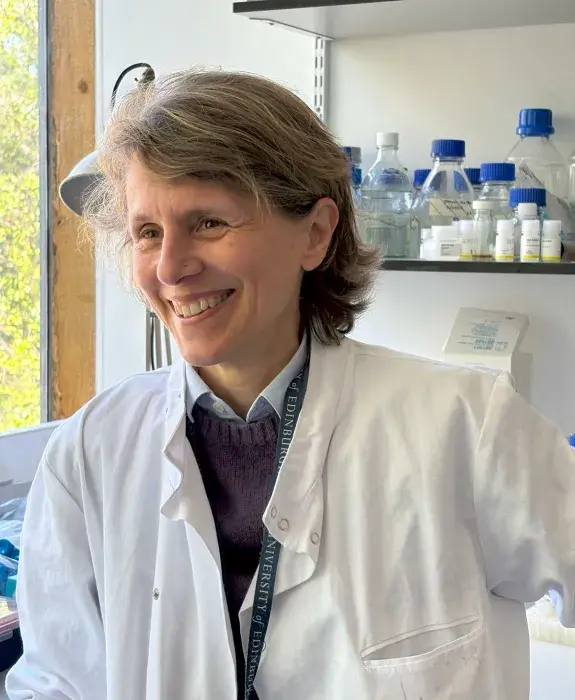I am a chromosome biologist. I have been interested for most of my career in different aspects of chromosome dynamics, from segregation to repair and replication. I have worked in many different model organisms, from Xenopus laevis oocytes to budding yeast, from mouse to human cells, and in many different countries. Currently, my group is bringing together different aspects of chromosome biology, chromatin architecture, epigenetic regulation and DNA replication, to integrate them into a coherent picture of nuclear function.
Find out more about Sara Buonomo.
Our research is focused on understanding how the genetic and epigenetic information are co-ordinately transmitted through cell division. This is a fundamental question, pertaining to every eukaryote. When a cell divides, first, the DNA needs to be copied without mistakes and distributed equally to the daughter cells. However, as importantly, key elements controlling the cell-type specific gene expression profiles, namely the epigenetic landscape and the architecture of chromatin contacts, need also to be transmitted together with the genetic information. How are these inheritance processes regulated and coordinated? My group has contributed to some fundamental advancements across the fields of DNA replication, genome architecture organisation and epigenetic inheritance. Not only we have made the discovery that has propelled forward the field of replication timing studies (see below, Cornacchia et al.), but we have also solved a decades-long conundrum on the significance and molecular mechanisms of the coordination of nuclear architecture and replication timing (see below, Foti et al. and Gnan et al.). Finally, my group has forwarded the understanding of the least known step during the process of X inactivation, namely the molecular mechanism behind the choice of which of the two X chromosomes in mouse female cells will undergo transcriptional silencing during embryonic implantation.

Through the years, our research has tackled fundamental questions, long-standing problems in biology. We have an unique integrated approach, that examines different nuclear processes in their coexistence, rather than in their individuality. to developing an holistic understanding of the nuclear function.
This article was published on

